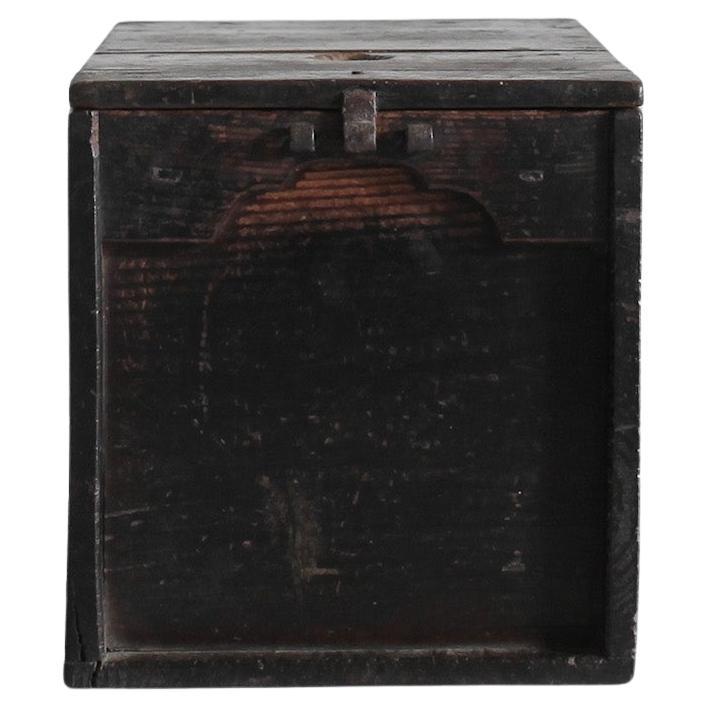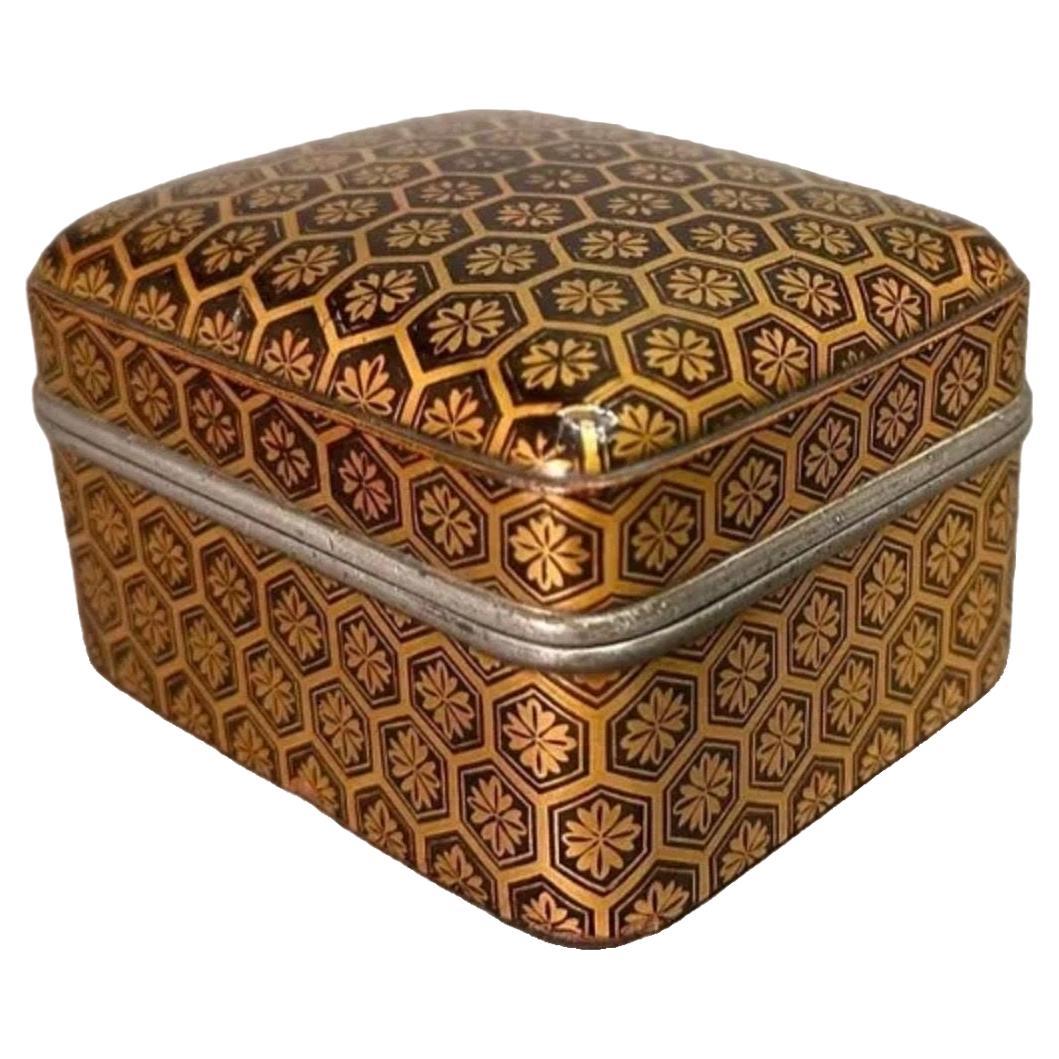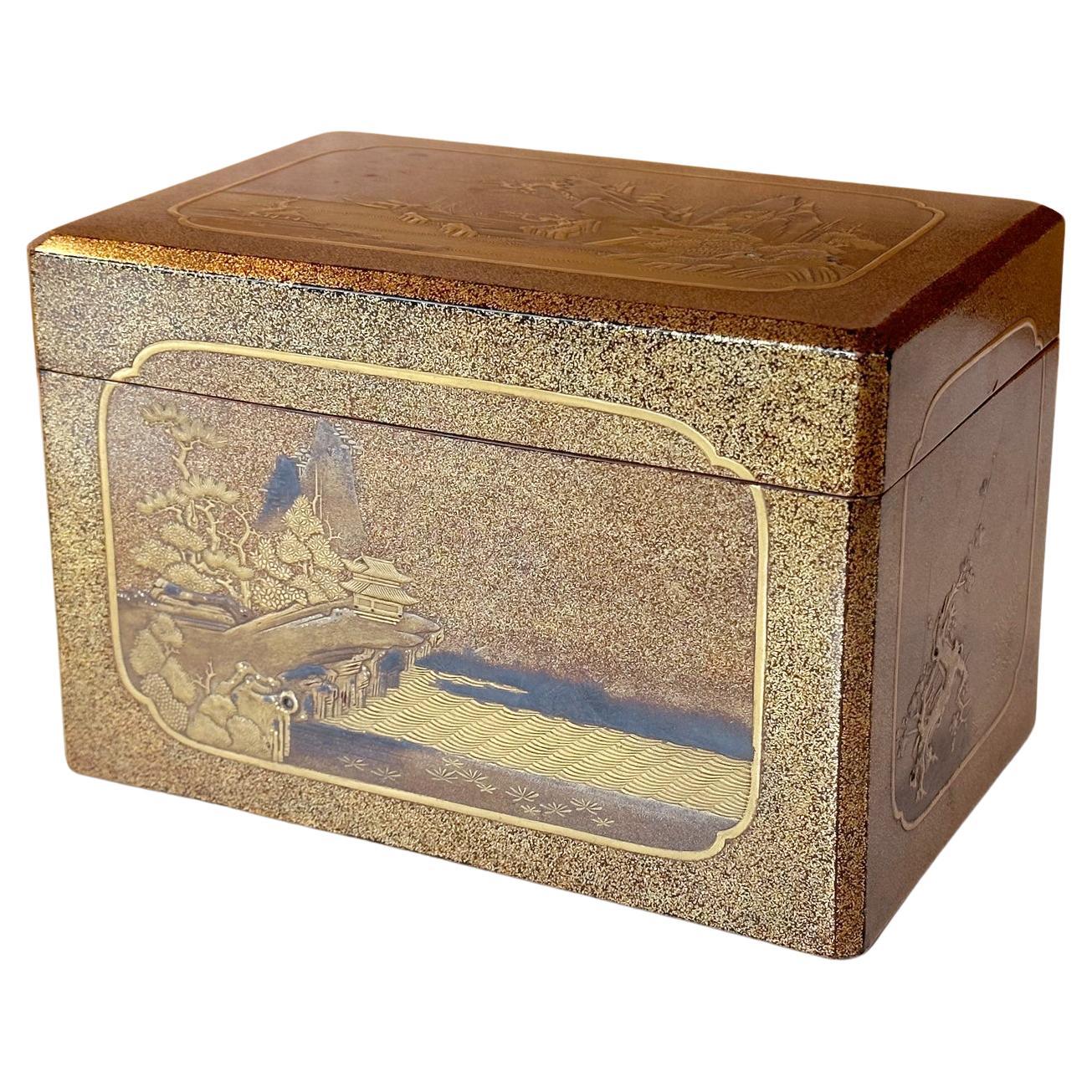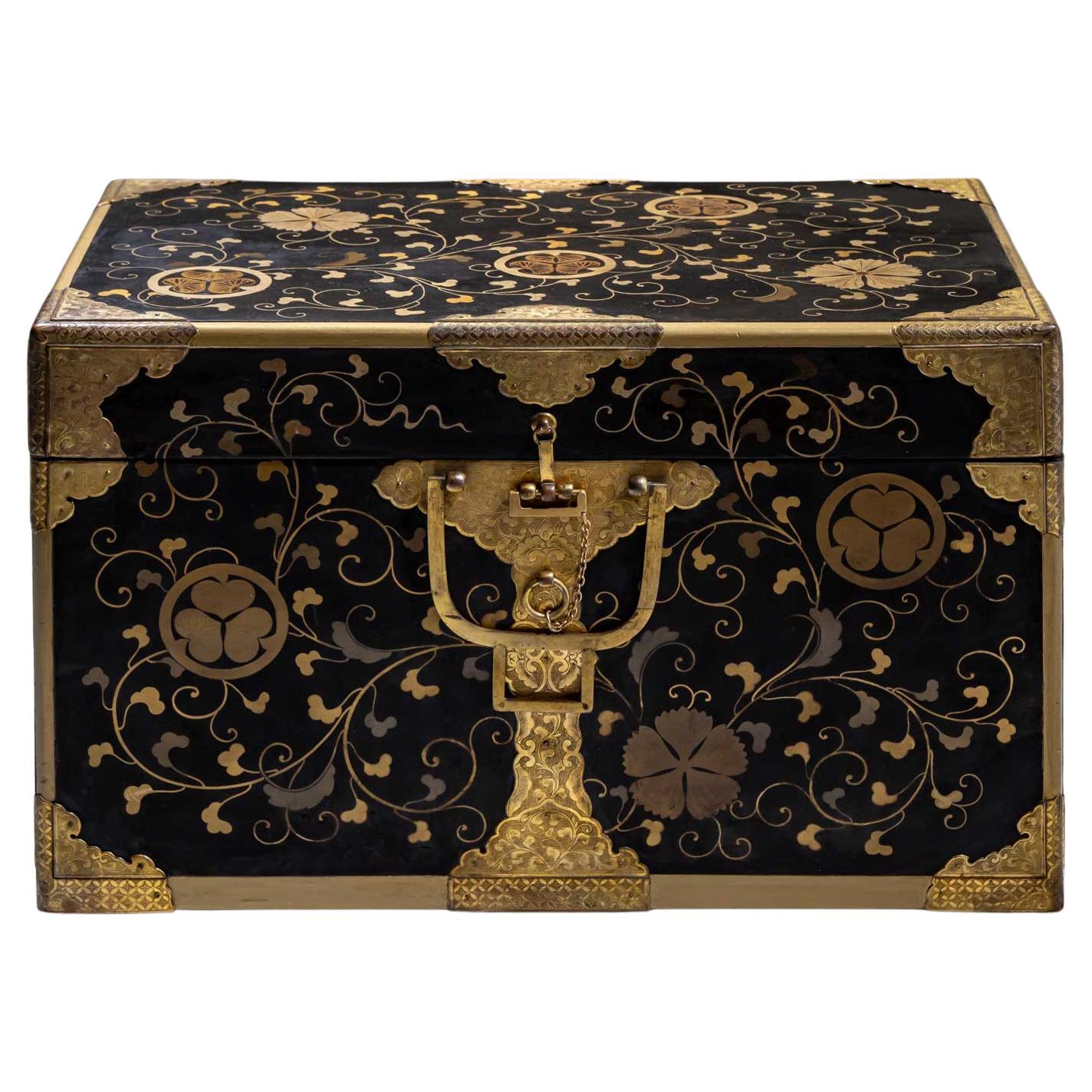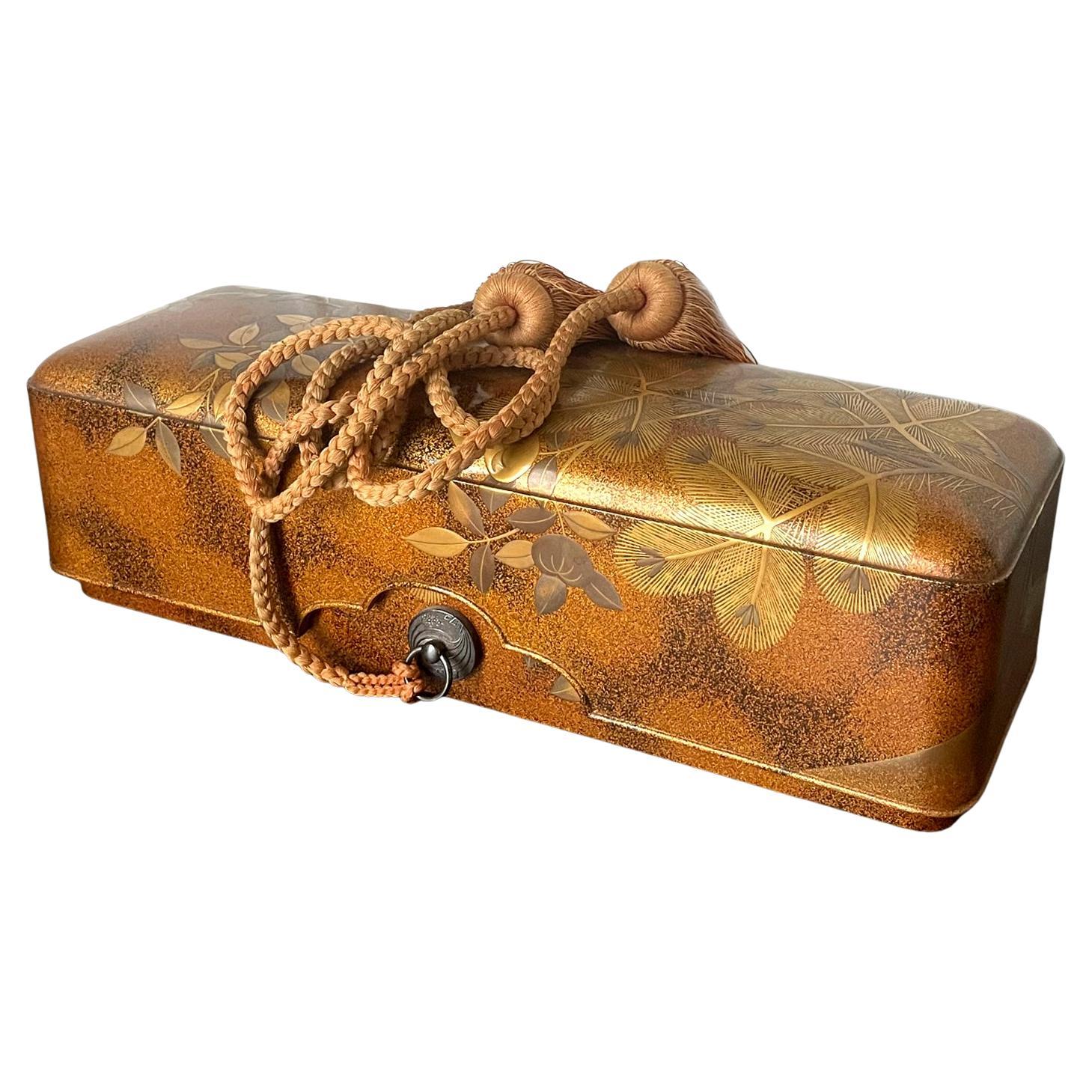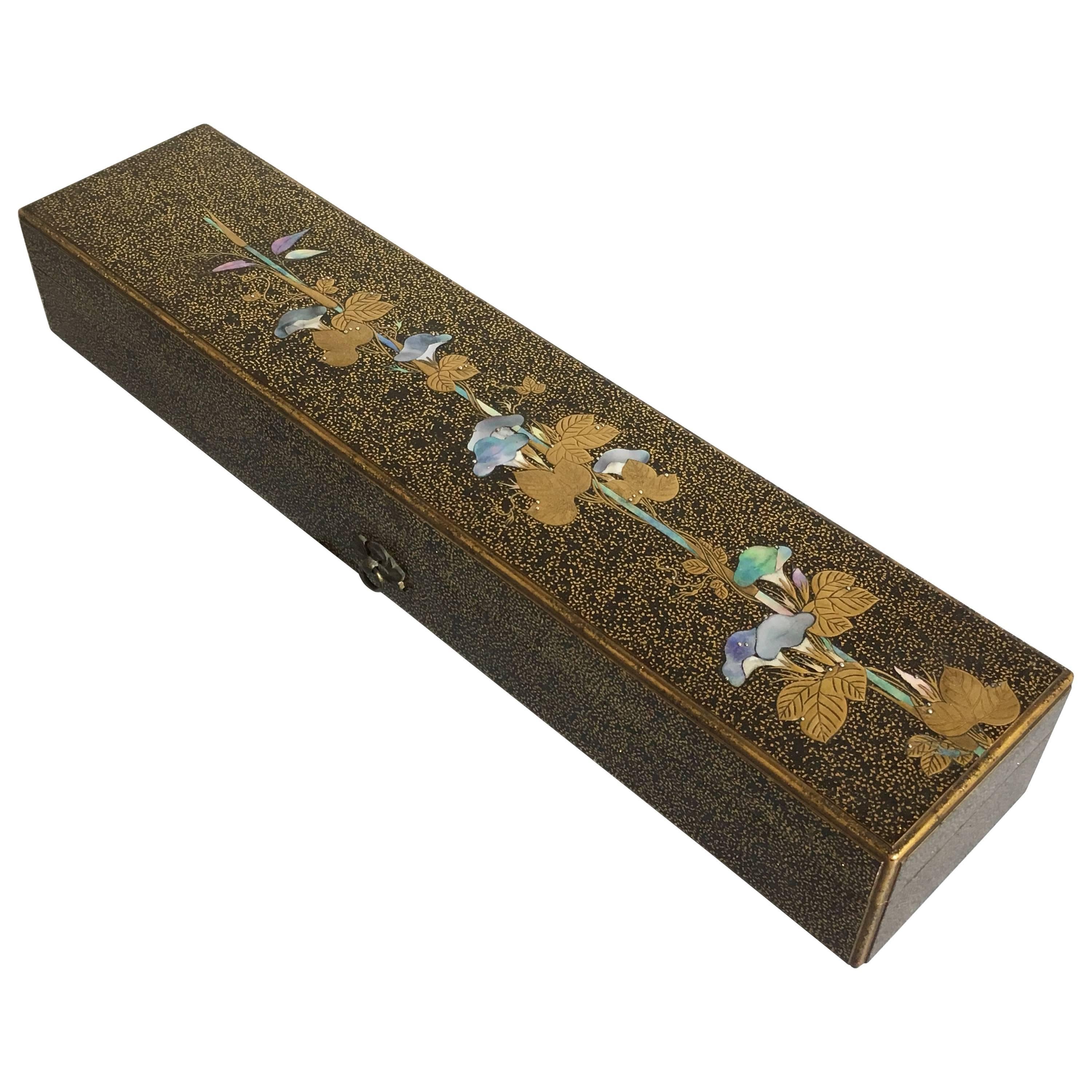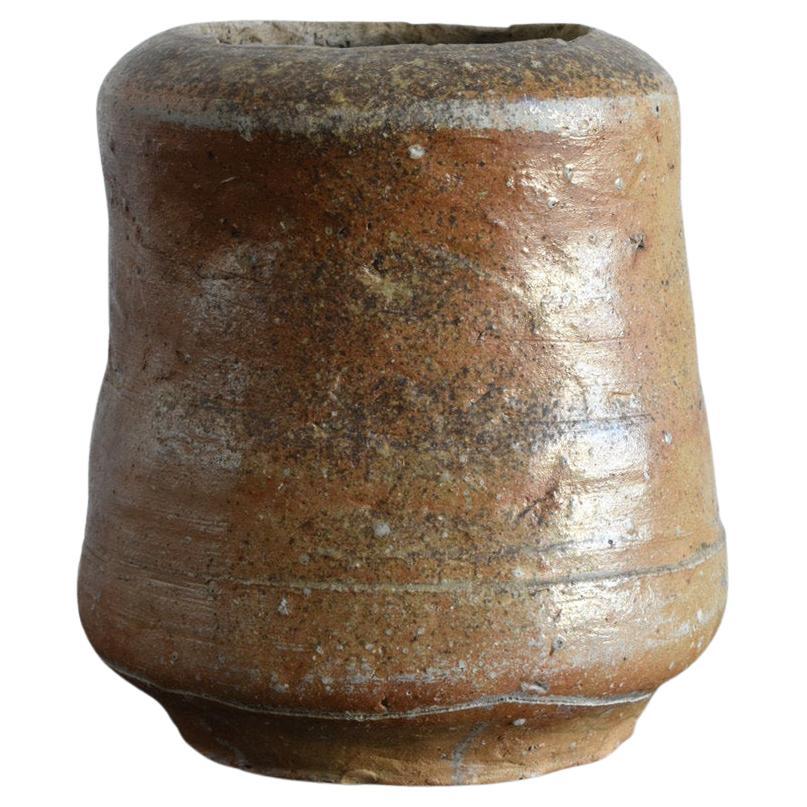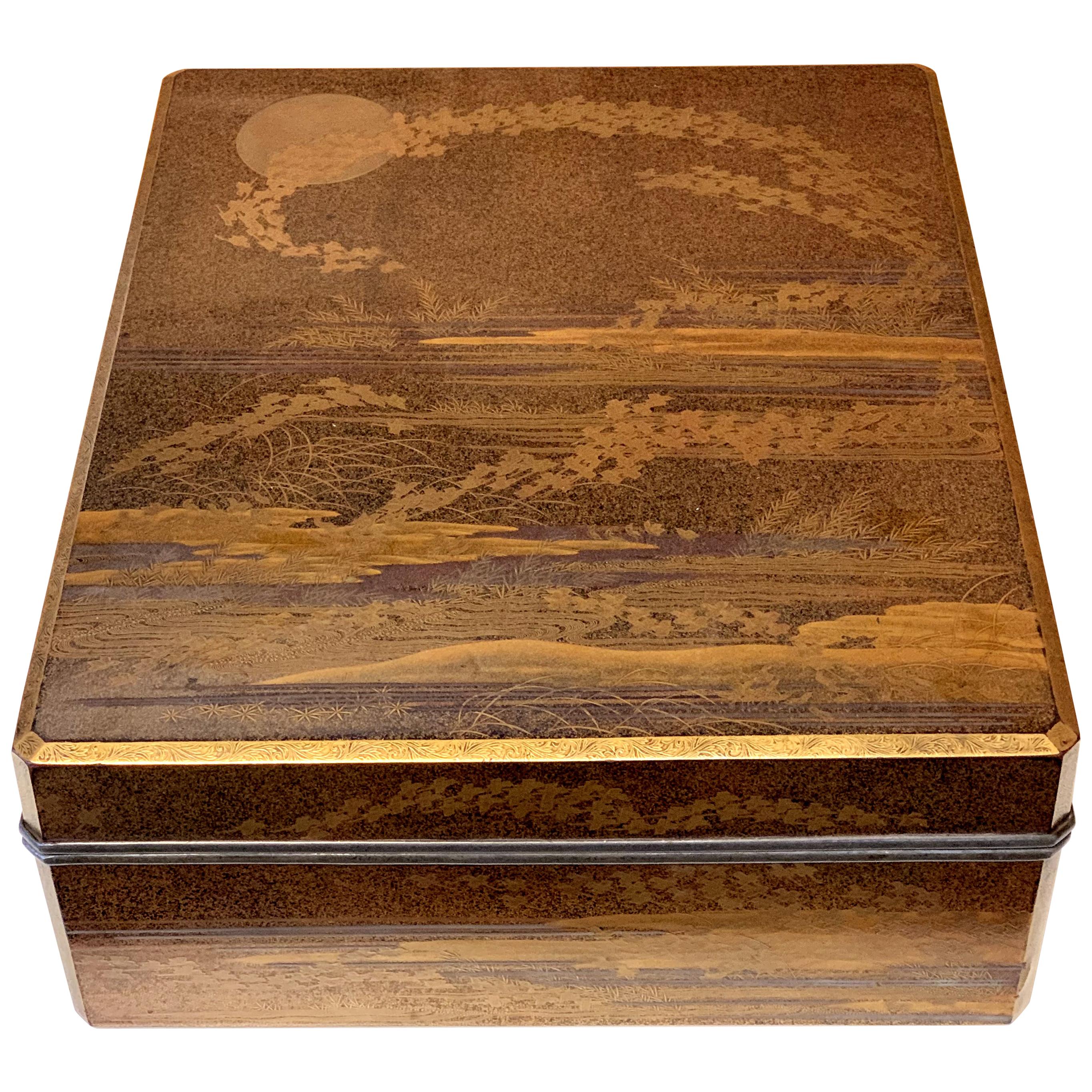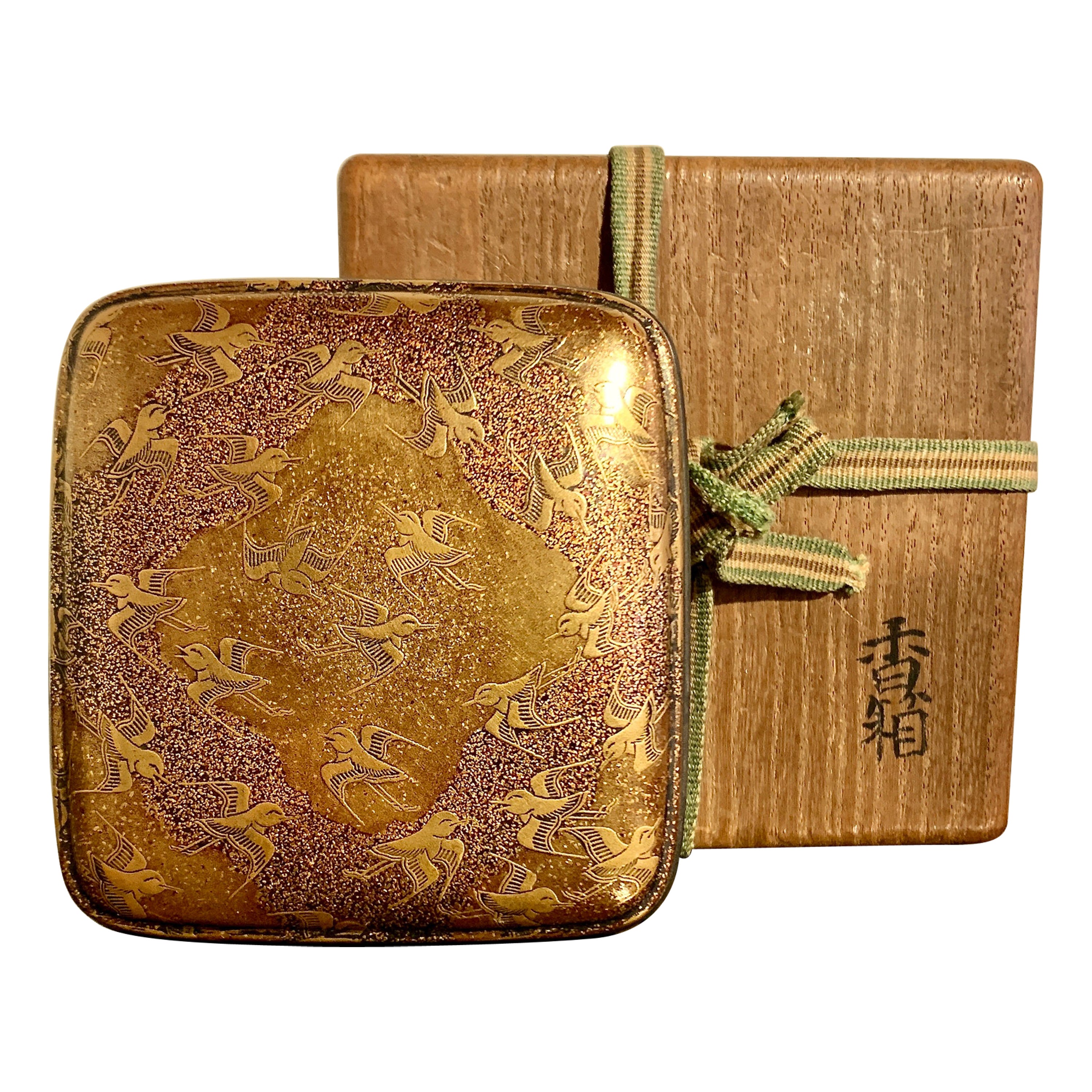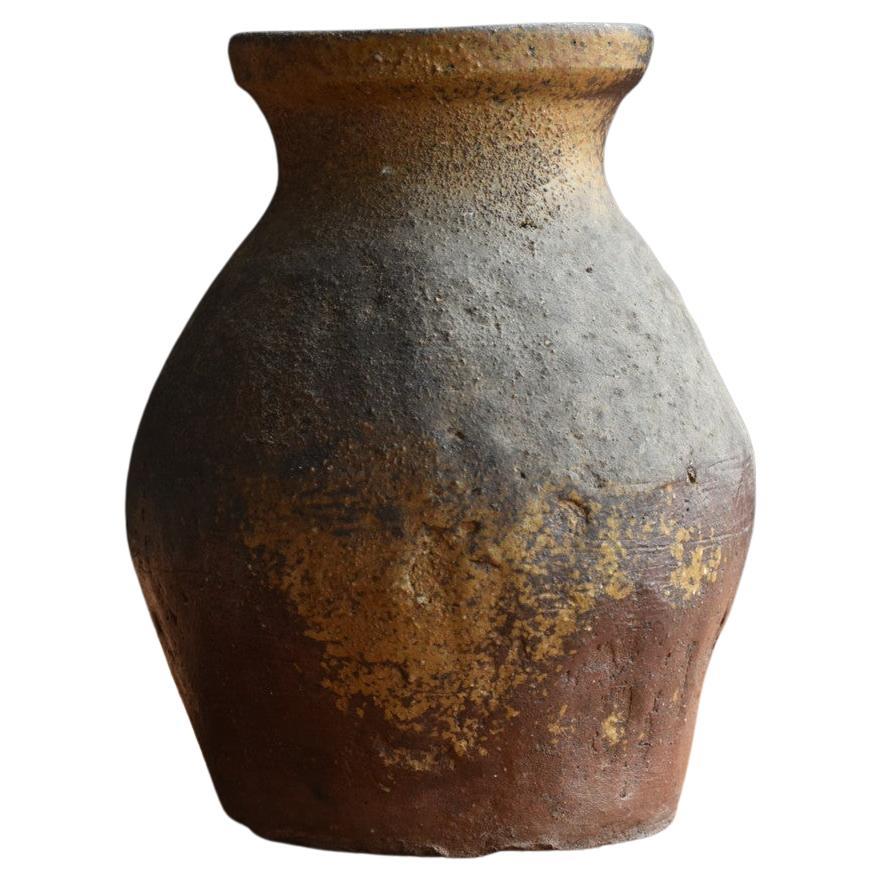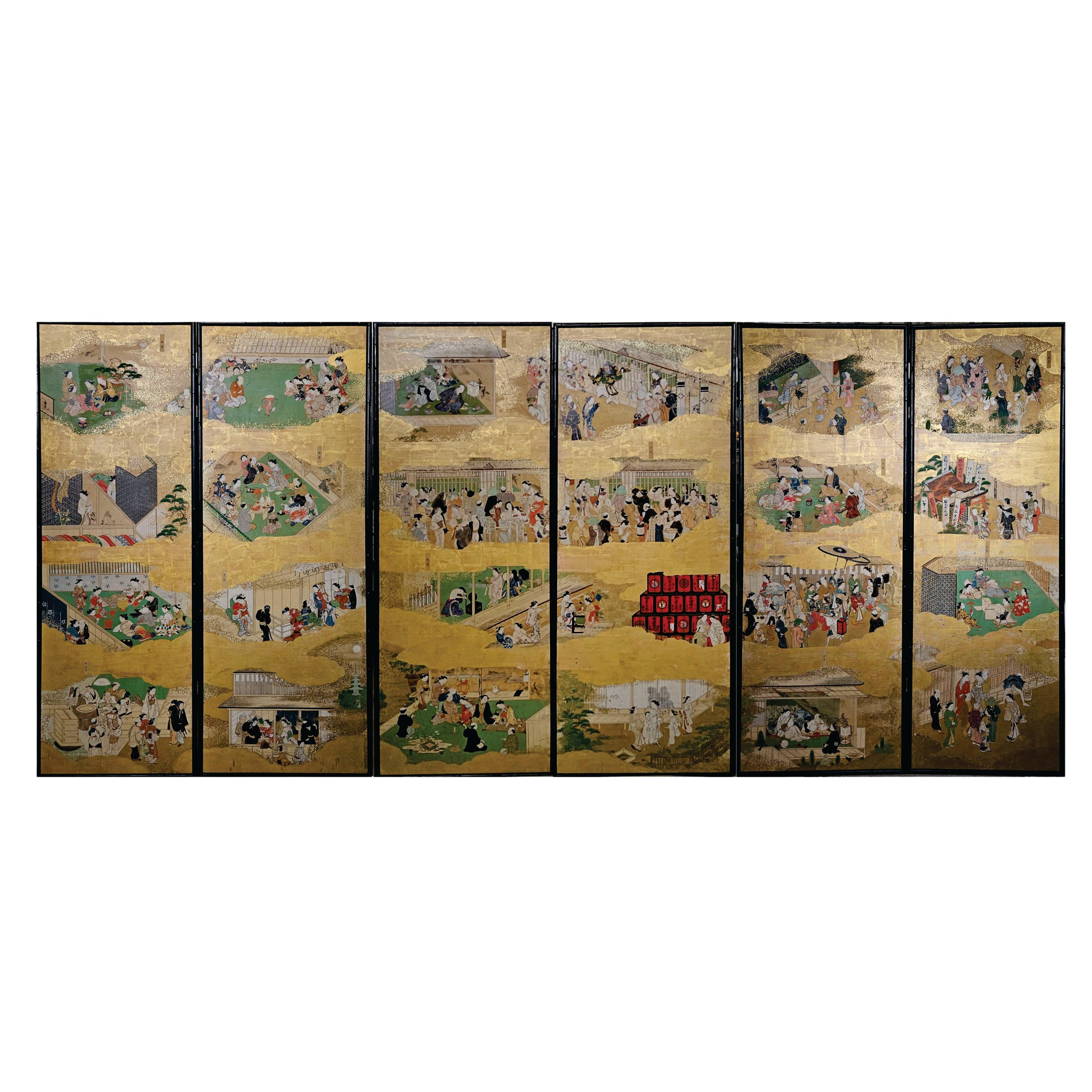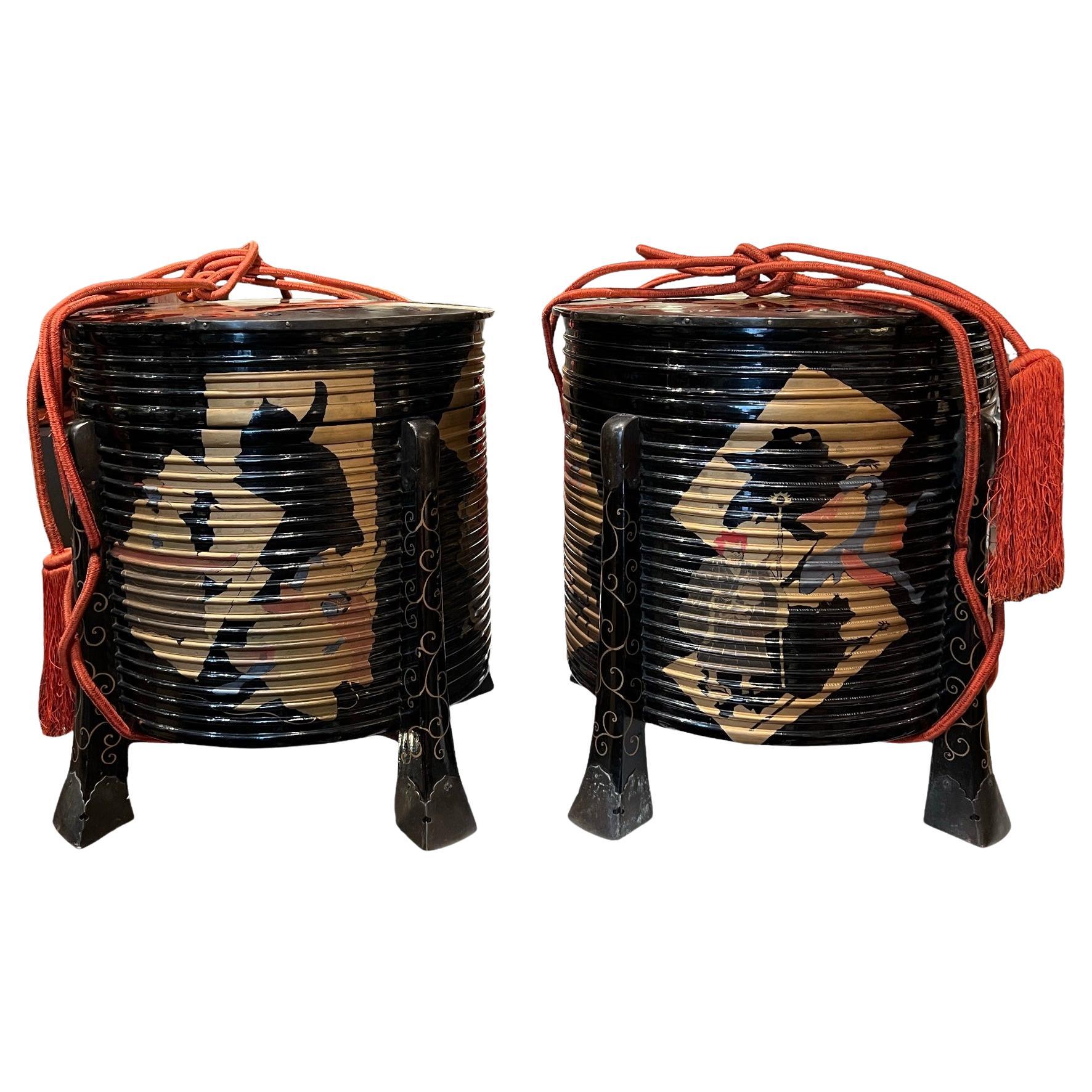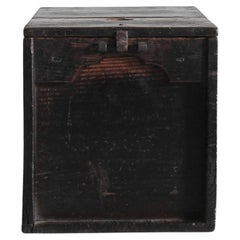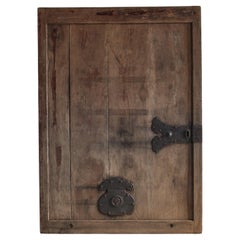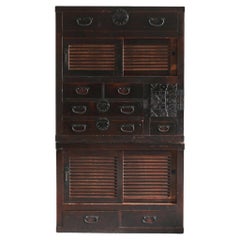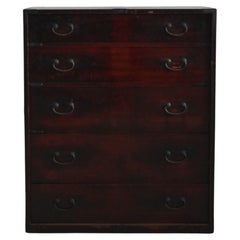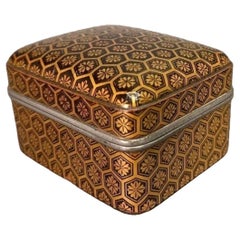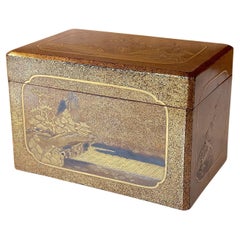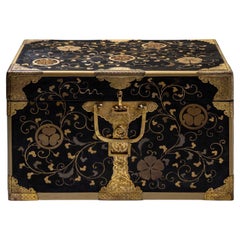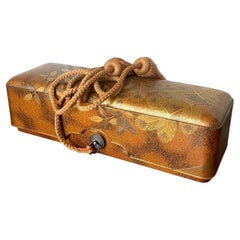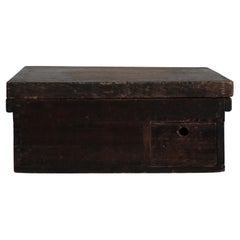
Late Edo Period Wabi Sabi Japanese Box with Small Drawer
View Similar Items
Want more images or videos?
Request additional images or videos from the seller
1 of 5
Late Edo Period Wabi Sabi Japanese Box with Small Drawer
About the Item
- Dimensions:Height: 8.47 in (21.5 cm)Width: 20.48 in (52 cm)Depth: 14.18 in (36 cm)
- Style:Edo (Of the Period)
- Materials and Techniques:
- Place of Origin:
- Period:
- Date of Manufacture:C.1850
- Condition:Refinished. Wear consistent with age and use.
- Seller Location:London, GB
- Reference Number:1stDibs: LU6535234059502
About the Seller
No Reviews Yet
Vetted Professional Seller
Every seller passes strict standards for authenticity and reliability
1stDibs seller since 2022
56 sales on 1stDibs
Typical response time: 7 hours
Authenticity Guarantee
In the unlikely event there’s an issue with an item’s authenticity, contact us within 1 year for a full refund. DetailsMoney-Back Guarantee
If your item is not as described, is damaged in transit, or does not arrive, contact us within 7 days for a full refund. Details24-Hour Cancellation
You have a 24-hour grace period in which to reconsider your purchase, with no questions asked.Vetted Professional Sellers
Our world-class sellers must adhere to strict standards for service and quality, maintaining the integrity of our listings.Price-Match Guarantee
If you find that a seller listed the same item for a lower price elsewhere, we’ll match it.Trusted Global Delivery
Our best-in-class carrier network provides specialized shipping options worldwide, including custom delivery.More From This Seller
View AllBeautifully Worn Late Edo Period Wabi Sabi "Safe"
Located in London, GB
A Beautifully Worn Late Edo Period Wabi Sabi "Safe"/Storage box.
Originally used to store money & valuables.
Heavily patinated cedar & chestnut.
Perf...
Category
Antique 19th Century Decorative Boxes
Materials
Chestnut, Cedar
XXL Late Edo Period Japanese Cedar “Kura” Door/Wall Hanging Wabi Sabi
Located in London, GB
A huge early 19th C. Japanese Kura door in cedar.
Beautifully patinated bleached-out wood with hand forged wrought iron plaque/lock.
Can either be used as ...
Category
Antique Early 19th Century Japanese Edo Doors and Gates
Materials
Iron
Large Wabi Sabi Two Section Late Edo Period Japanese Tansu Cabinet
Located in London, GB
A tall two section Japanese tansu from the mid 19th century.
Nicely patinated cedar with multiple drawers, sliding doors & iron hardware.
Strong utilitarian design.
Category
Antique Mid-19th Century Japanese Cabinets
Materials
Iron
Part Charred Edo Period Tansu/Chest Of Drawers Wabi Sabi
Located in London, GB
A tall, 5 drawer part charred cedar & elm Japanese tansu from the early 19th C.
Both a beautiful & very practical piece of furniture.
Heavy patinated through years of use with orig...
Category
Antique Early 19th Century Japanese Edo Commodes and Chests of Drawers
Materials
Iron
Large Taisho Period Wabi Sabi Japanese Tansu
Located in London, GB
A large charred cedar, elm & paper Japanese Tansu from the early 20th century Taisho period.
Coming in two parts its both an incredibly decorative & use...
Category
Early 20th Century Japanese Taisho Furniture
Materials
Elm, Cedar, Paper
XL Wabi Sabi Taisho Period Japanese Ceramists Table
Located in London, GB
An XL square early 20th C. Japanese ceramists display table.
Removed from a ceramists studio in Nagoya where it was used as a display table.
Constructed in cedar with unusual colla...
Category
Vintage 1920s Japanese Taisho Center Tables
Materials
Cedar
You May Also Like
A Japanese Edo Period Lacquer Kogo (Incense) Box, late 17/early 18th Century
Located in Spencertown, NY
Early Japanese Lacquer Incense Box (Kogo) Late 17thc. Of rectangular form with soft corners, decorated with a diaper pattern in gold lacquer on a brownish black ground, with pewter r...
Category
Antique 17th Century Japanese Edo Decorative Boxes
Materials
Pewter
Exquisite Japanese Lacquer Maki-e Hand Box Kobako Edo Period
Located in Atlanta, GA
An early Japanese lacquer Maki-e decorated kobako (small storage box) circa 18th century (Edo period). Based on its form and size, this kobako was possibly used as a Chabako to store the accoutrements for chado (tea ceremony). The lidded box is of rectangular form with bevel design on all edge that softens the appearance. The entire surface was densely covered with a background of nashiji. Elaborate Maki-e techniques were used on each side to showcase a distinct landscape or floral design within a cartouche panel. On the surface of the lid, a mountainous landscape rises from the edge of the water. The poetic composition is akin to a traditional ink scroll...
Category
Antique 18th Century Japanese Edo Lacquer
Materials
Lacquer
Japanese Lacquer Chest, Edo Period
Located in Greding, DE
Small rectangular Japanese chest with gold lacquer decoration in the form of leaf tendrils. The chest is decorated with cut-out and ornamentally engraved fittings on the corners and ...
Category
Antique 18th Century Japanese Edo Decorative Boxes
Materials
Brass
Japanese Lacquer Maki-E Scroll Box Fubako by Kansonsai Edo Period
Located in Atlanta, GA
A Japanese lacquered wood fubako (a box to store document or small scroll painting) circa late 18th century of Edo period. The rectangular box features a deep lid with rounded corners and recessed mid-edge and a lower box with two bronze medallion rings and tasseled silk ties. The surface of the fubako was elaborately decorated with hiramaki-e and a low takamaki-e on a mottled Mura-nashiji background. The motifs on the lid depict branches of Japanese pine with finely rendered needles on the lower part; on the upper part, it showcases fruited persimmon branches. Two different shades of gold fundame were used to contrast the design and augmented by scattered gold kirigane to highlight some of the leaves. The design continues and cascades down to all sides of the lid as well as the walls of the box. The two bronze medallions appear original to the box and the silk ties show significant fading from the age. This Fine fubako is signed on the lower wall "Kanshosai" in Kanji with a kao mark. All the trims were finished in gold fundame and the interiors a dense nashiji in gold.
Kanshosai is the mark of the distinguished lacquer artist Lizuka Toyo I who also signed his work "Toyosai". He was active in the second half of the 18th century during Edo period, employed by Hachisuka Shigeyoshi (1738-1801), daimyo of Awa on Shikoku Island. Although most survived work bearing his marks are inros, he was also known to decorated trays and other larger objects...
Category
Antique Late 18th Century Japanese Edo Lacquer
Materials
Wood, Lacquer
Japanese Edo Period Igarashi School Long Lacquer Box, Tanzaku-Bako
Located in Austin, TX
A stunning Japanese Edo period lacquer tanzakubako, box for poem cards, late 18th-early 19th century, Edo Period, Japan.
Attributed to the Igarashi School, this box is masterfully ...
Category
Antique Early 19th Century Japanese Edo Lacquer
Materials
Mother-of-Pearl, Lacquer
Japanese Wabi Sabi Antique Pottery Jar/1600s/Edo Period Vase
Located in Sammu-shi, Chiba
It is "Shigaraki ware".
Shigaraki is a historical kiln located in Shiga Prefecture, Japan. (Shigaraki Kiln is marked with a red circle on the map.)
It is said to have originated in...
Category
Antique Early 17th Century Japanese Edo Vases
Materials
Pottery
